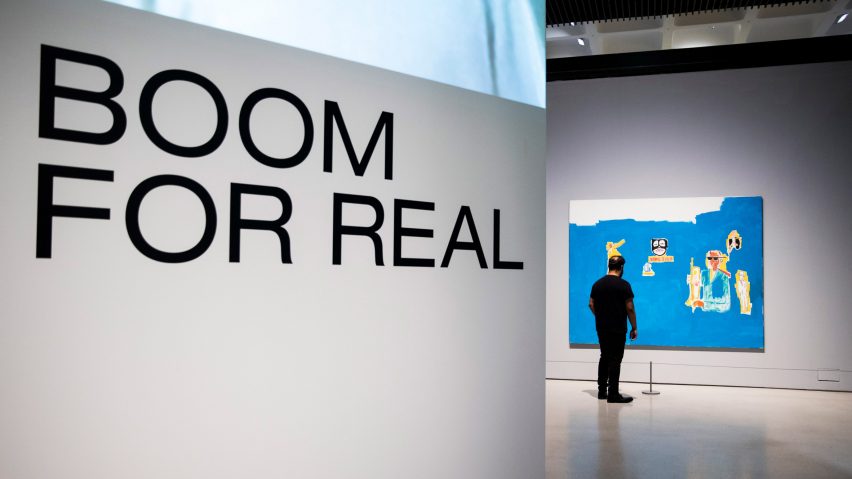
Jean-Michel Basquiat's art reconstituted the world around him, says Boom for Real curator
The curator of a new Barbican exhibition on Jean-Michel Basquiat has selected five key works that show how the late American artist drew on a vast range of design influences – including comic books, sweet wrappers and illustrations from Gray's Anatomy.
The exhibition titled Basquiat: Boom for Real brings together more than 100 artworks by the New York graffiti-artist-turned-painter, and is the first large-scale exhibition of his work in the UK.
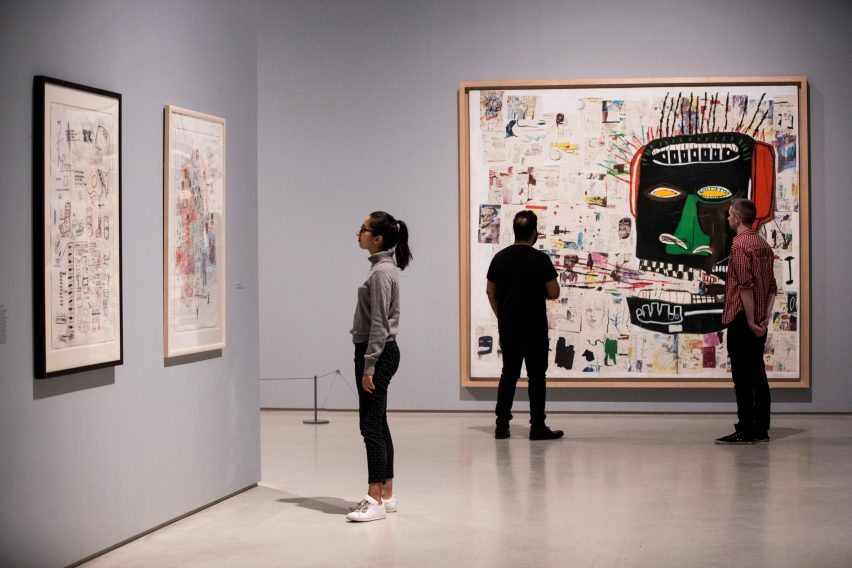
Works included range from Basquiat's early graffiti work in the late 1970s under the pseudonym SAMO© – an abbreviation of "same old, same old shit" – to his collaborations with with high-profile artists like Andy Warhol and Keith Haring.
Speaking to Dezeen, assistant curator Lotte Johnson said that you can find direct connections between Basquiat's early work and everyday product designs, such as sweet wrappers and train tickets.
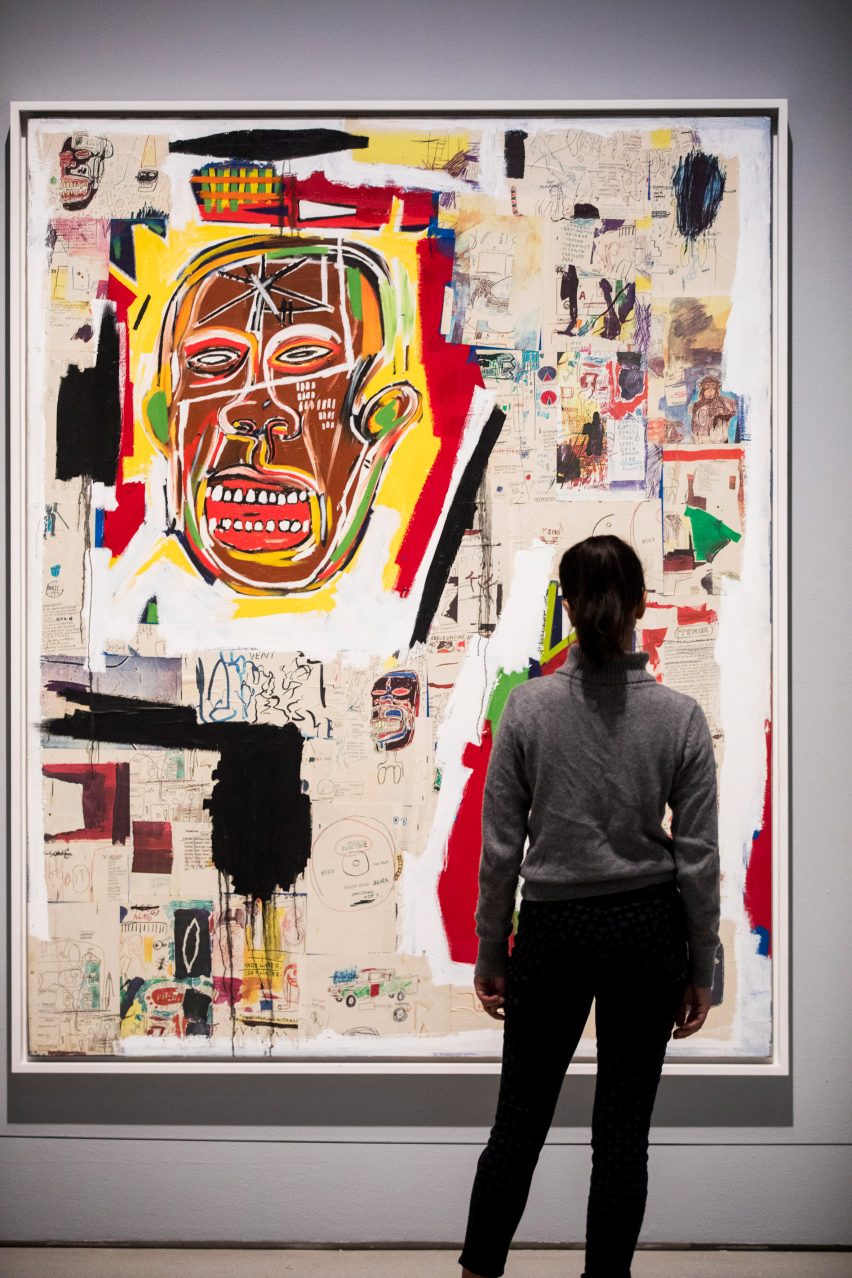
"He was constantly absorbing influences and references from the world around him," she told Dezeen.
"Some of his earliest works are these amazing collages he made with artist Jennifer Stein that take materials from around the studio and off the street, and paste them onto pieces of paper and photocopy them."
In these collages, Basquiat and Stein would take PEZ sweet wrappers, cut out the letters and rearrange them.
"They were taking graphic design – the kind of symbols and signs they saw in the world around them – and reconstituting them," said Johnson.
Later work would include intricate allusions to iconography found in Egyptian mythology and African rock art, as well as direct references to pictorial texts such as Black Beauty, White Heat: A Pictorial History of Classic Jazz 1920-1950 and Gray's Anatomy.
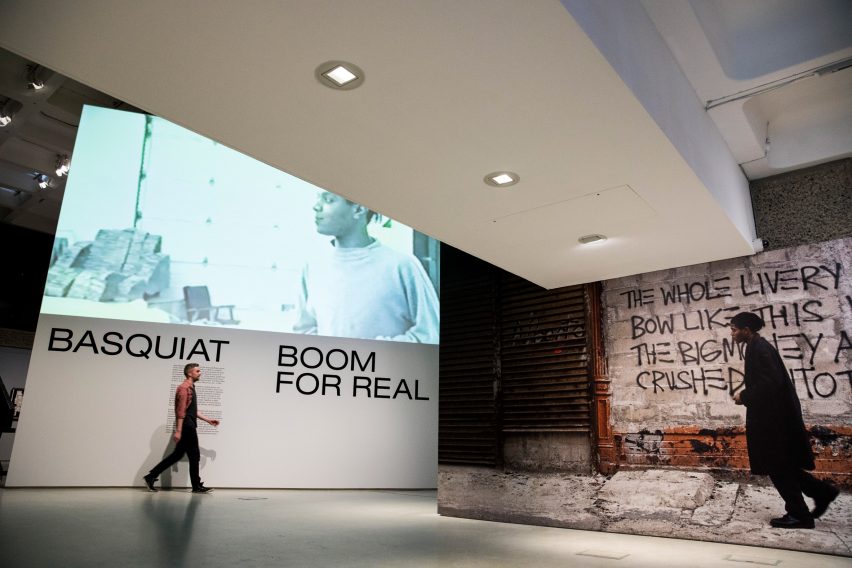
"He was literally lifting elements from books and translating elements into his works," Johnson explained.
"For example, we know that Basquiat was fascinated by anatomy, he drew anatomical studies from many of his paintings and drawings – the book by Leonardo da Vinci and Gray's Anatomy."
Despite his relatively short career – Basquiat was just 27 when he died in 1988 – Johnson said Basquiat had "a huge impact on contemporary practitioners".
"It is in his incredible speed of execution that the graphic representation of his work plays out," she added. "His use of symbols and signs in this incredibly dense network – this amazing clarity has had a great influence on designers."
Basquiat: Boom for Real is on show at London's Barbican until 28 January 2018.
Exhibition photography is by Tristan Fewings/Getty Images.
Below, Johnson writes about five key projects featured in the exhibition:
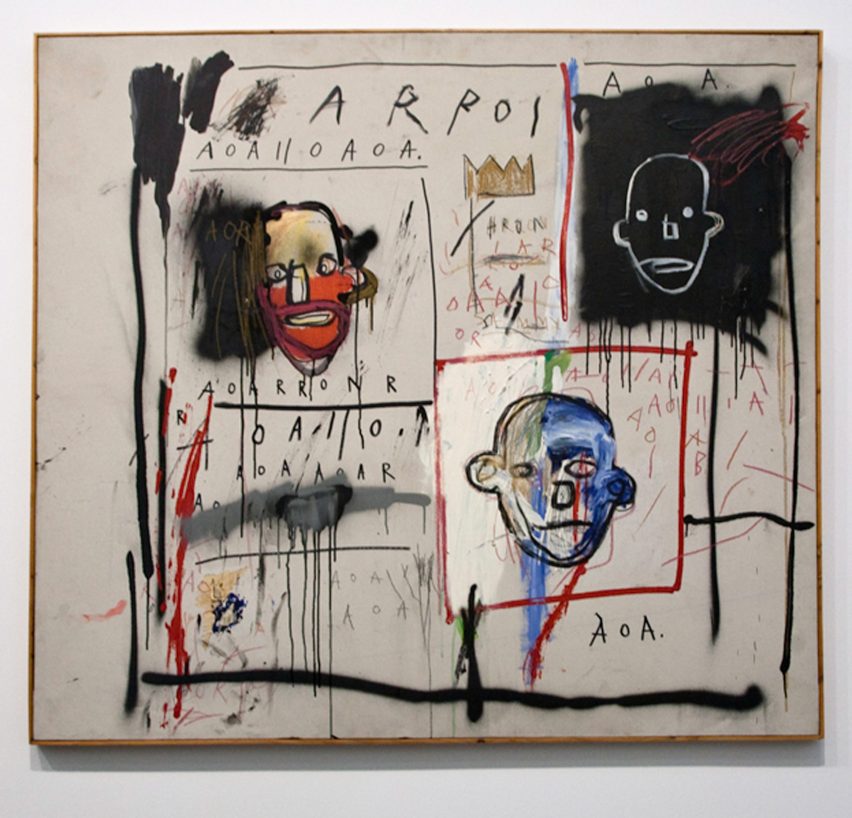
Untitled, 1981
Mugrabi Collection
In 1981, Basquiat was included in the exhibition New York/New Wave at PS1 in New York – a show that featured over 100 artists, musicians and writers. Basquiat was the only artist in this exhibition to be given a prominent platform to show painting. One of the pieces he included was Untitled, made when he was just 20 years old.
The work is dominated by three striking heads, their simplified delineated outlines reminiscent of the heads that had appeared in his SAMO© tags, which he spray-painted around the streets of New York.
Variations on the name Aaron are also scrawled several times on the painting. Basquiat occasionally used Aaron as a pseudonym, which is likely a reference to Hank Aaron, the celebrated baseball player, as well as Moses' brother Aaron, who helped free the Israelites from Egypt.
The scattered letters A and O, which also persistently appear in many of Basquiat's works, could provide a further biblical reference to "Alpha and Omega, the beginning and the end".
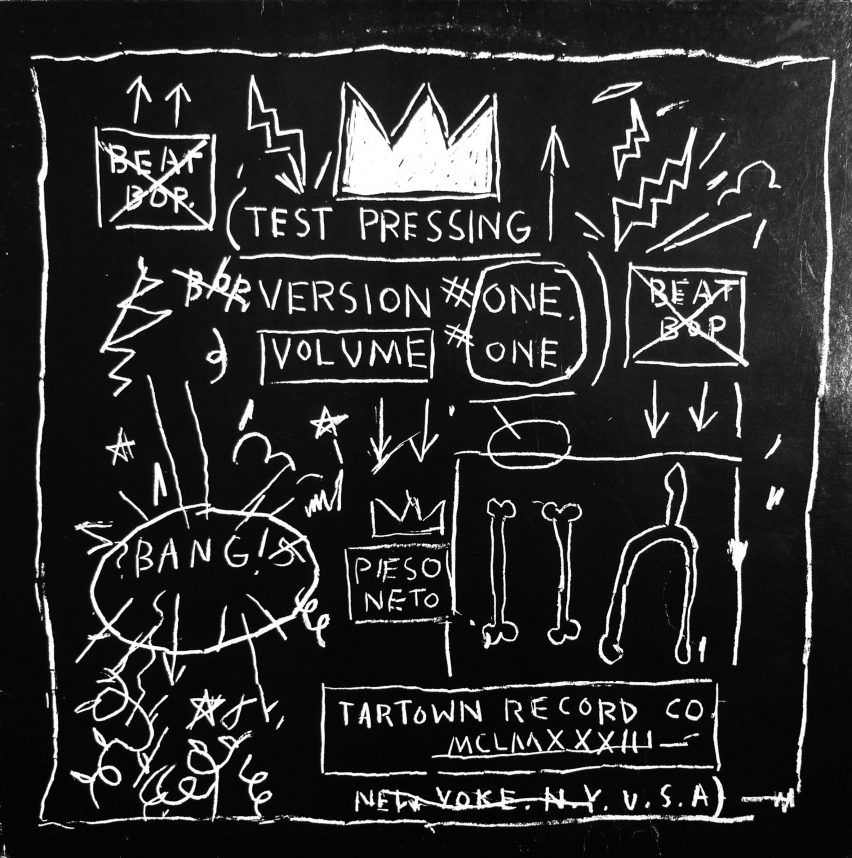
Beat Bop record cover, Tartown Records, 1983
Basquiat designed the front and back cover for Beat Bop, a hip-hop single by American rappers Rammellzee and K-Rob and produced by Basquiat himself. Released on one-time label Tartown Records, it has an abstract sound. The syncopation of the record is reflected in Basquiat's design for the cover, which is characteristic of his drawings from the period.
There are cartoon references – the phrase "bang" with lines and circles coming out of it – that really connect to cartoons and slapstick comedy, like Pop Eye and Crazy Cat.
The crown motif visible here has become iconic for Basquiat's practice. One reference that we often bring to light is that in jazz tradition, jazz legends would be given monarchical titles. There is also a legacy in graffiti, where graffiti artists would crown each other's work to ascribe status.
Basquiat would often use the crown in the context of the history of African American people in history and contemporary society too. It would then be associated with great black figures he admired, to place them back in a canon and to give them status.
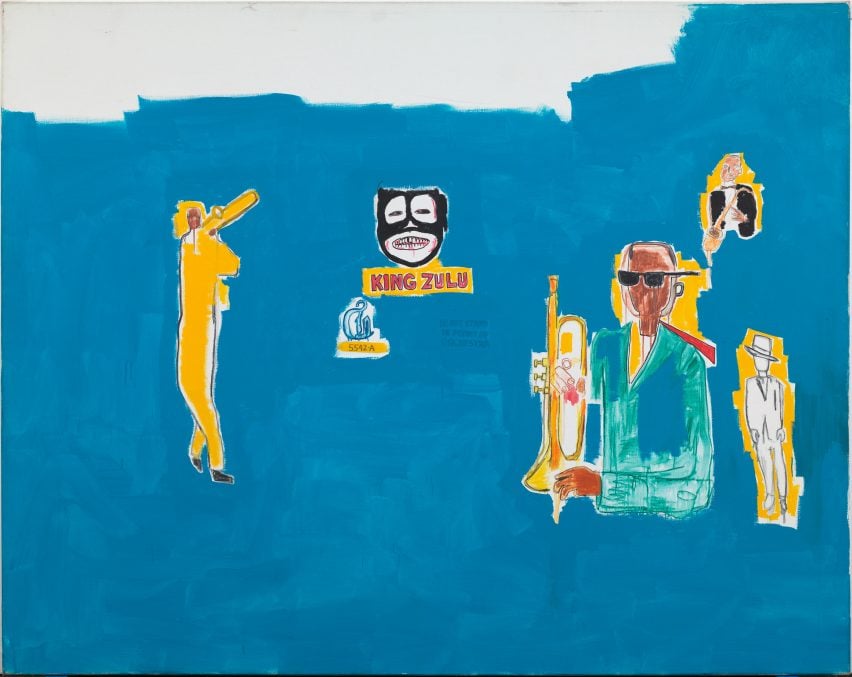
King Zulu, 1986
MACBA Collection, Government of Catalonia long-term loan, formerly Salvador Riera Collection
Music in particular had a great influence on Basquiat's practice. He listened to everything, from Donna Summer to Bach, though his paintings are mostly dominated by the history of black jazz musicians.
He had a collection of over 3,000 records and he would rarely work without something playing in his studio. Several books on the subject of jazz became frequent reference points. The fragments in this work, King Zulu, were sourced from the 1982 book Black Beauty, White Heat by Frank Driggs and Harris Lewine.
The title of the painting – inscribed beneath the grinning mask – relates to Louis Armstrong, who was crowned King Zulu at the Mardi Gras parade in 1949. While Armstrong deemed it a great honour, Basquiat treats the exaggerated blackface costume with a certain ambivalence.
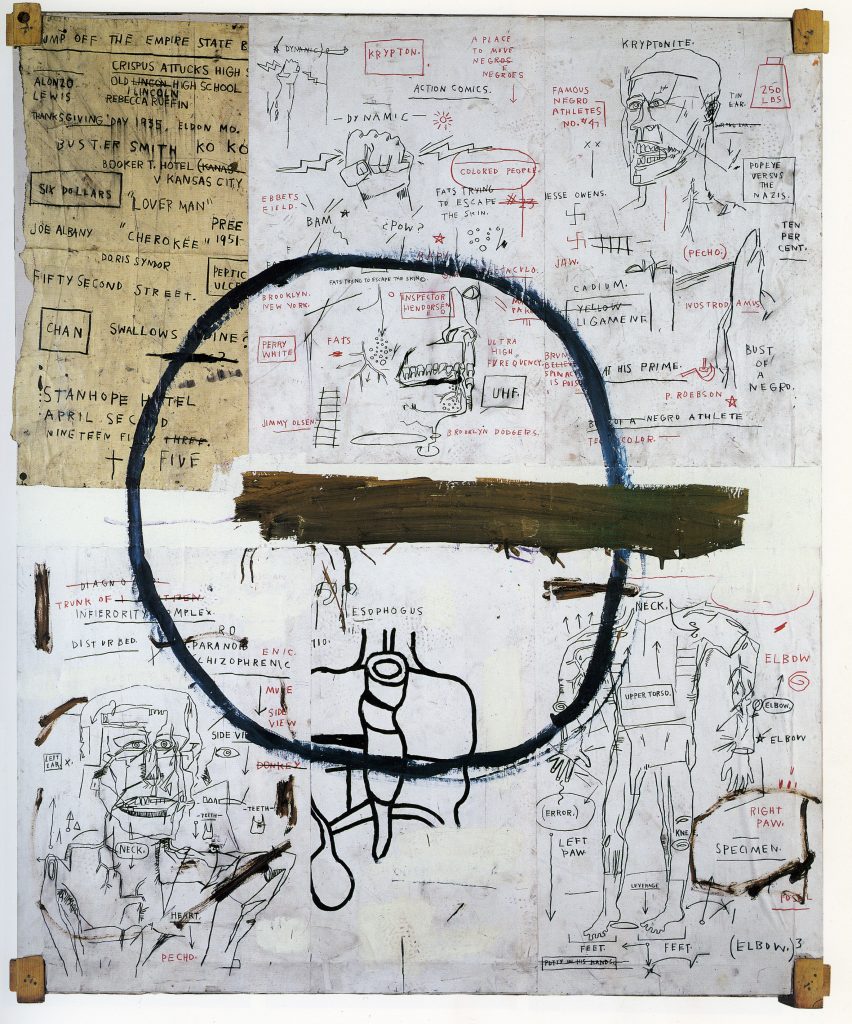
Jesse, 1983
Courtesy of John McEnroe Gallery
This remarkable work is a direct homage to Jesse Owens, the celebrated black athlete who won four gold medals in the 1936 Olympics in Berlin. His physical strength is gestured to in the many collaged anatomical drawings pasted onto the canvas.
This iteration of the Olympics was used by Hitler to promote his ideas of racial supremacy, referenced in the Nazi swastikas that appear next to Jesse Owens' name in the painting.
Owens defied Hitler's attempted propaganda however by setting extraordinary world records, and his incredible talent is echoed in the multiple references to Superman that appear across the canvas. These include the words "Action Comics" – the comic book series that introduced the superhero.
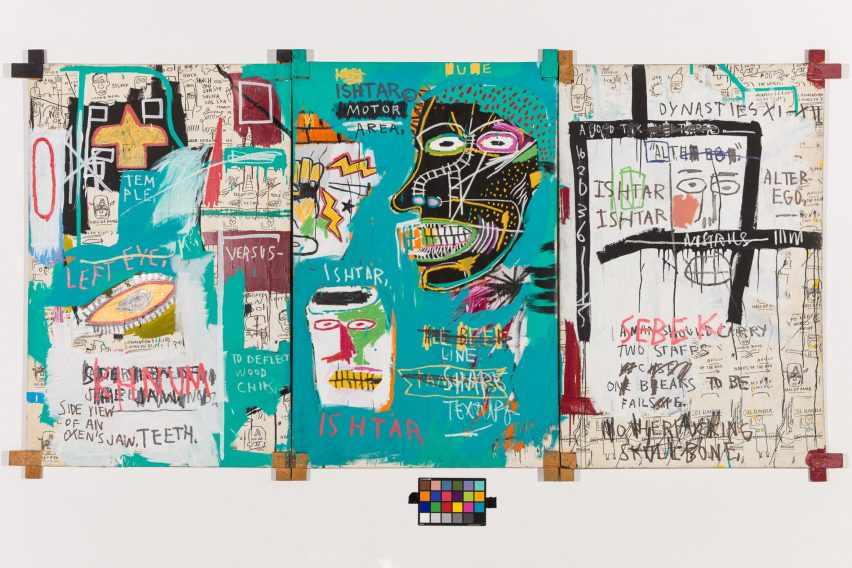
Ishtar, 1983
Collection Ludwig, Ludwig Forum für Internationale Kunst, Aachen
Basquiat named this monumental triptych after Ishtar, the Egyptian goddess of fertility and war. He was fascinated by mythology, as evidenced by the repeated name of the goddess written on the painting.
Underneath the vivid painted sections of the work, it is evident that the background of the work is pasted with photocopied drawings, a technique that Basquiat was using in many of his paintings at this time.
In the upper left corner, a small drawing of a pig is visible, with a list that appears to have been copied from Harold Bayley's 1912 book The Lost Language of Symbolism, which we know Basquiat owned. This is just one example of how Basquiat's works were so rich in their source materials and in their encyclopaedic range of reference points.